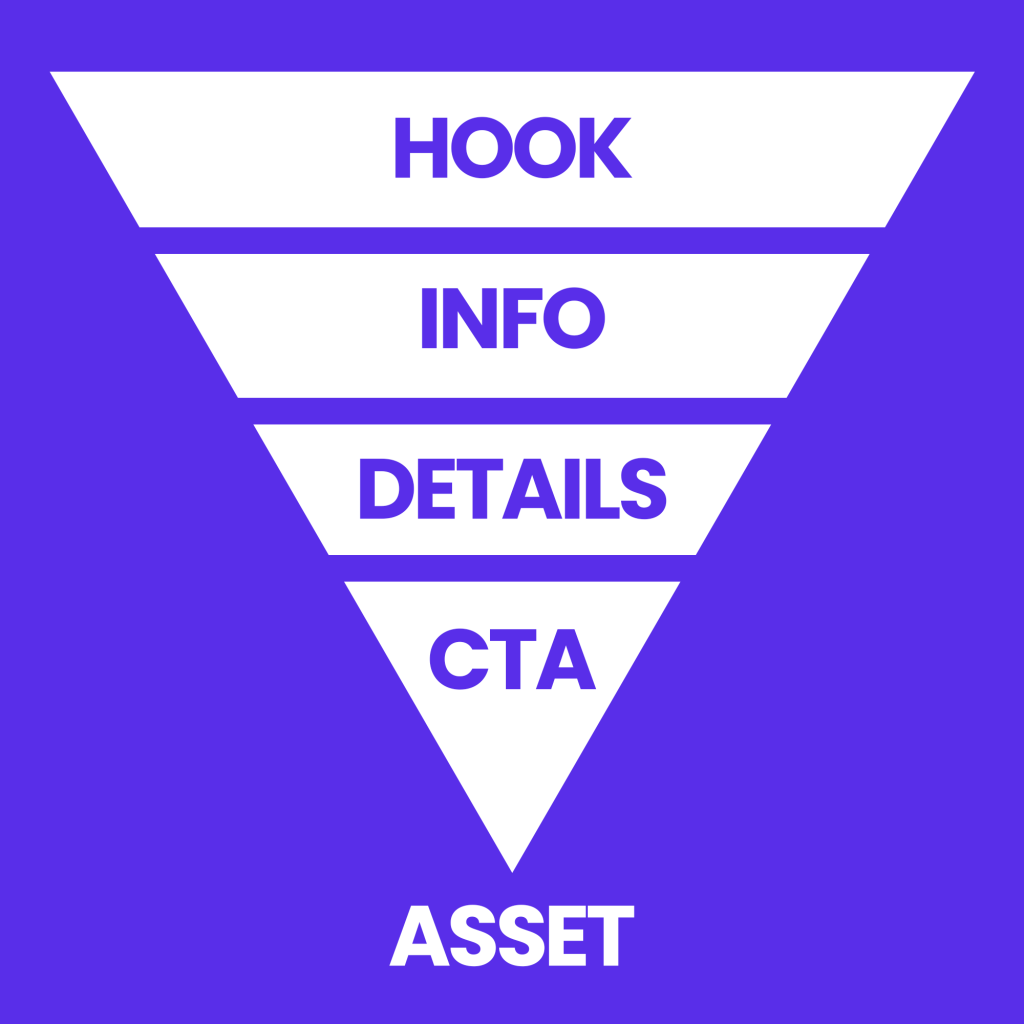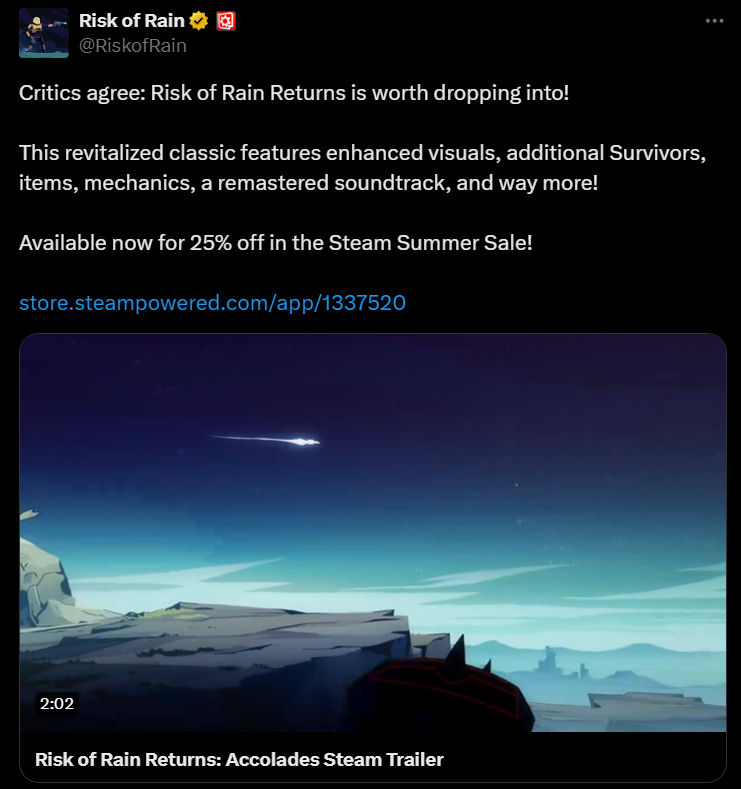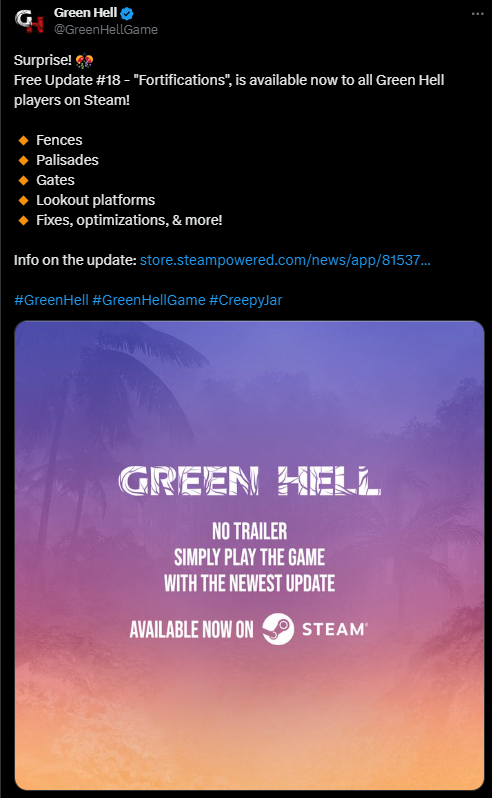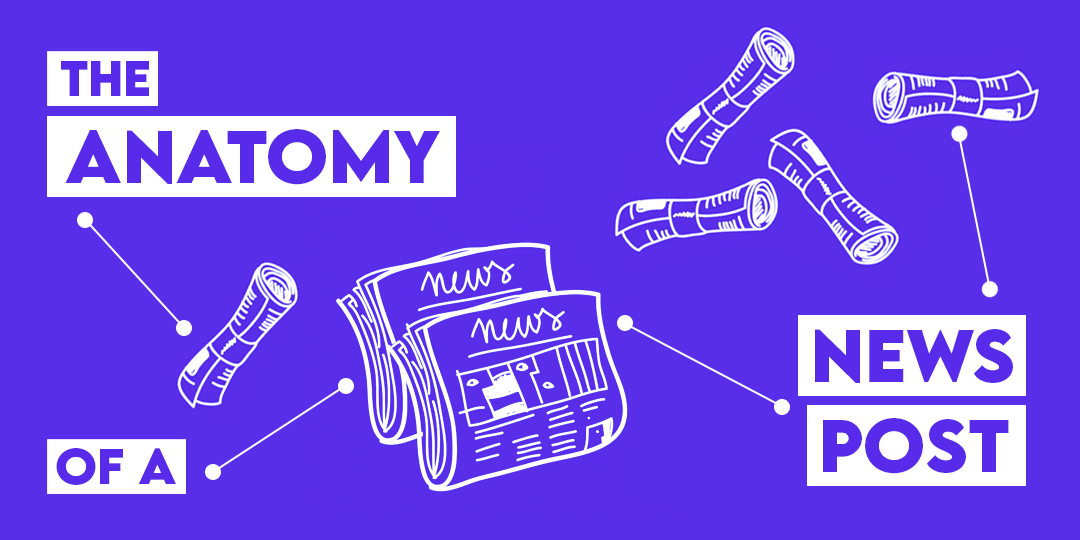A major part of what we do for our Evolve Community clients is crafting informative, and engaging social posts for various platforms.. While onlookers may think that it is all memes and shitposts, we sadly have to be professional every once in a while. A sizable portion of the content should be informative and explain the game to the audience. This is generally a screenshot or short clip with a description, but we occasionally need to share a larger amount of newsworthy information in a single post. This could be something major like a release date or something smaller like a patch or bug fix.
In a way, it’s similar to what our PR Specialists do; when they aren’t responding to emails until their fingers turn to bloody stumps and their eyeballs shrivel like beef jerky, they write press releases to spread news for our clients. These releases often feature embedded screenshots, trailers, links, and more. The goal is to catch the eye of one of the many talented editors, journalists, creators, and influencers that operate within the vast web of the gaming industry and get them to talk about the game.
While the two tasks are decidedly different, they have a lot in common: they need to be attention-grabbing, feature a combination of written word and visuals, and convey an easily decipherable message to whomever is viewing them. However, they have one major difference: length!
A press release can be hundreds of words long and include all sorts of details, whereas social media posts are much shorter. Even though almost all social media platforms allow longer posts (or do so with a premium membership ), it’s better to keep them on the shorter side; this SEO expert recommends 240-259 based on the data. Social media users are perpetually ingesting loads of information at once, and keeping the post succinct gives it a better chance of being digested in full. However, you don’t want to go too short and leave out essential information. People need context.
The best way to accomplish this is with a defined structure. It’s known by many names, but most commonly as the “Inverted Pyramid.” It’s often used in news articles and press releases but applies perfectly to social posts, but y’know, smaller. Like a pyramid for a pharaoh’s cat. We’ve outlined it piece-by-piece below.

Part 1: The Hook
This is the first line of the post. Much akin to a fishing lure, the goal is to get something (or someone) on the hook. This is usually brief and punchy, and while it can be informative, it doesn’t have to be; it just needs to be exciting enough to get the audience to read the rest of the post.
Example: “Players, good news is on the way!”
Part 2: The Info
This is the most important information. This is the topic of the post and contains the most essential information.This IS the news. It should still be succinct to allow for further elaboration. If it takes too long to get to the point, users will scroll past to the next thing. Maybe this next thing will be an asinine political thread that spirals completely out of control. The user will waste an hour of their day reading it all and it will be your fault because your post was boring.
Example: “Patch 1.30 is now live to all players on Steam and Nintendo Switch.”
Part 3: The Details
This is the information that is less important but still interesting. These are the additional details that expand on the topic and provide insight and context. While it can be put into a sentence or two, a good way to break the information up is in a point-form list.
Example 1: “Not only can you expect bug fixes and balancing tweaks, there are also three new weapons, two new stages, and five new power-ups!”
Example 2:
“Featuring:
- Bug fixes
- Balancing tweaks
- 3 New Weapons
- 2 New Stages
- 5 New Power-ups”
Part 4: CTA
Now that the reader has been hooked in, given the essential and bonus information, it’s time to direct them to the next step. This is usually a defined call-to-action accompanied by a link.
Examples: “Watch the trailer,” “Check out the full patch notes on our blog,” “Grab a copy for 20% off from today until Sept. 12.”
Part 5: The Asset
Here’s where things get a little bit murky. Assets can range from screenshots and simple design work to full trailers, vast infographics, and more. If the asset is immediately eye-catching, it can act as the hook and you may not need to include one in the writing. However, if it’s a long trailer, you’ll likely need to write a hook to get someone to actually watch it. If the asset is an infographic, then you won’t need to include as much information in the writing. You can always tweak the structure to strengthen the asset and vice versa.
Full Example 1: Risk of Rain Accolades Trailer
Here’s a recent post we did for a client where we posted an accolades trailer to coincide with a sale.

The Hook
“Critics agree: Risk of Rain Returns is worth dropping into!” Uses the fact that the game is critically acclaimed to attract players. “Dropping in” alludes to a key game mechanic.
The Info
“This revitalised classic features enhanced visuals, additional Survivors, items, mechanics, a remastered soundtrack, and way more!” This describes how the game expands and improves on the original.
The Details
“Available now for 25% off in the Steam Summer Sale!” This lets prospective players know that if they get it now, they’ll save money. It’s additional info that provides further incentive to play.
The CTA
“[Steam Link]”. This gives clear direction to Steam where they can make a purchase or add it to their wishlist.
The Asset
[Accolades Trailer] The trailer shows a combination of gameplay and quotes from critics, acting as additional information. It provides tangible examples of what the post is saying: “This game is awesome and you should play it!”
Full Example 2: Green Hell Update
Here’s another example for good measure, this time with a static image.

The Hook
“Surprise! 🎊”
The Info
“Free Update #18 – “Fortifications”, is available now to all Green Hell players on Steam!”
The Details
“🔸 Fences
🔸 Palisades
🔸 Gates
🔸 Lookout platforms
🔸 Fixes, optimizations, & more!”
The CTA
“Info on the update: https://store.steampowered.com/news/app/815370/view/3877098283555930559”
The Asset
This asset parodies the Grand Theft Auto VI post that was popular at the time while also providing the news. With this in mind, it doubles as both an additional hook and information.
Conclusion
So that’s that! As stated earlier, you can (and should) tweak the structure depending on the news, asset, and audience you have in mind; but adhering to the inverted pyramid structure is a great starting point and will allow you to convey the essential information easily and succinctly.
Social media users are perpetually being pulled in a million different directions by posts, advertisements, and DMs. Do them a favour by giving them something they want to see.

